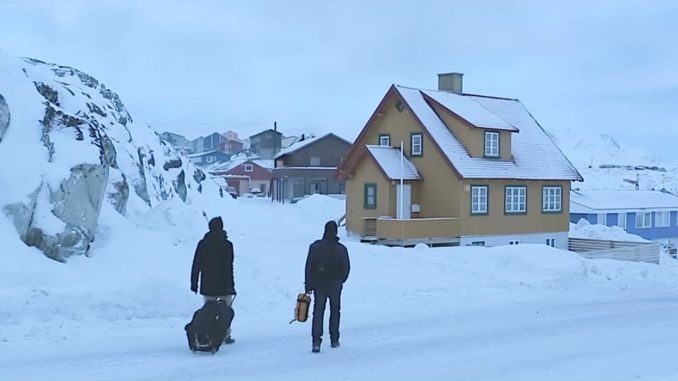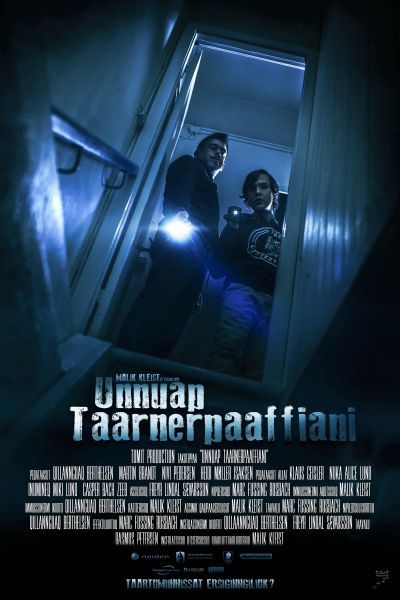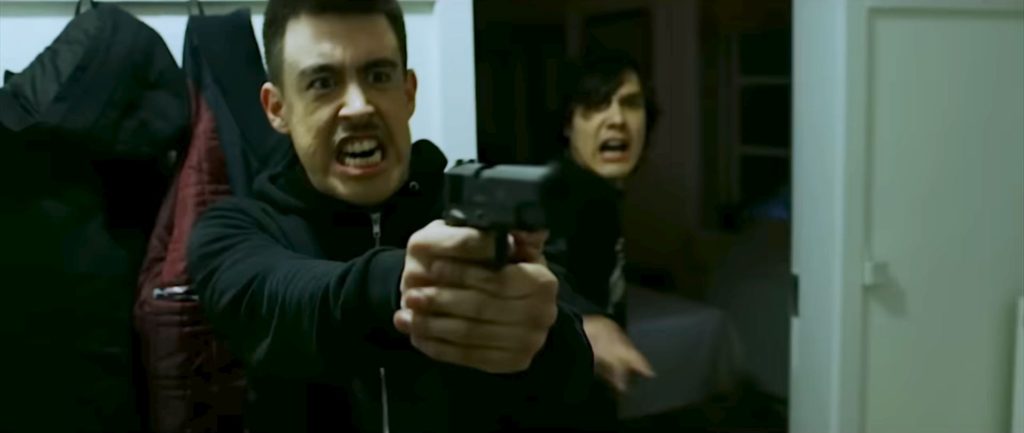
Rating: B
Dir: Malik Kleist
Star: Qillannguaq Berthelsen, Martin Brandt, Nivi Pedersen, Heidi Møller Isaksen
a.k.a. Unnuap Taarnerpaaffiani
Firstly, to address the polar bear in the room, I know Greenland is not technically a country. It is an autonomous territory of the Kingdom of Denmark, which has had a limited form of self-government since 1979, and actually withdrew from the EEC in 1985. But it’s closer to Canada, Iceland and Britain than Denmark, has its own language, and feels very much like a different country. So, I’m making an executive decision and allowing it to qualify here. It certainly deserves to count, on the basis of sheer size alone. I talked earlier about how Kazakhstan is bigger than you might think. That goes equally as much for Greenland: let’s pause for a quick geography lesson.
Greenland is 2,166,086 square km in size: that makes it the biggest island in the world – sit down, Australia, you’re a continent – and more than half the size of the United States. Put another way, the Kingdom of Denmark (including Greenland) is the twelfth biggest country in the world. Excluding it, Denmark drops to one hundred and thirtieth by area. Yet despite that massive area, Greenland is home to only about 56,000 people, significantly less than the small county of Moray in Scotland where I grew up. Were it to be a country, it’d be among the ten smallest by population. If you are in London, there’s a good chance you have more people living within one mile of you, than in the entirety of Greenland, which is approaching nine times the size of the entire United Kingdom.
 All of which makes it a little surprising that Greenland has made any movies at all. I mean, there doesn’t appear even to be a dedicated cinema on the island, the closest being Katuaq, a cultural hub in the capital city of Nuuk, which is also a concert hall, conference centre and art gallery. There have been films set in Greenland – most obviously Greenland, starring Gerald Butler, though Iceland stood in for it there. There have been films shot in Greenland – perhaps most famously, Smilla’s Sense of Snow. But there have also been genuinely local movies, made in the native language, Kalaallisut, which is related to Inuit. In the horror genre, though? We’re basically talking about one man: Malik Kleist.
All of which makes it a little surprising that Greenland has made any movies at all. I mean, there doesn’t appear even to be a dedicated cinema on the island, the closest being Katuaq, a cultural hub in the capital city of Nuuk, which is also a concert hall, conference centre and art gallery. There have been films set in Greenland – most obviously Greenland, starring Gerald Butler, though Iceland stood in for it there. There have been films shot in Greenland – perhaps most famously, Smilla’s Sense of Snow. But there have also been genuinely local movies, made in the native language, Kalaallisut, which is related to Inuit. In the horror genre, though? We’re basically talking about one man: Malik Kleist.
The Wikipedia page on Greenlandic films lists three horror movies, all of them directed by Kleist. Born and brought up in Nuuk, he worked at the local TV station until 2009, when he left to co-found independent company Tumit Production, with Aka Hansen. Kleist made his directorial debut in 2011 with Qaqqat Alanngui (I’m thinking playing Scrabble in Greenland must be a trip), in which “A group of young friends decide to go on a graduation trip for the weekend to a family owned cabin in the isolated mountains of Greenland.” Three guesses how that goes; when something is described as “isolated” in Greenland, you know the characters will hardly need to bother checking for a cellphone signal. It spawned a sequel, Alanngut Killinganni in 2022.
In between, there’s this, which is largely a two-hander, simple to the point of almost glacial sparseness. Hansi (Brandt) wants to cheer up his friend Minik (Berthelsen) after a romantic rejection. What better way than to spend a night in a haunted house? That’ll certainly take your mind off things. They get a tip from a friend at a party about a local building where a man recently disappeared, and Hansi’s research reveals it is reputedly the site of a mass murder committed by a local shaman in the 19th century. Initially, it seems perfectly normal, but as is par, things gradually escalate. An ornament on a mantelpiece moves by itself. The power goes off when they’re in the basement. That’s just the start.
This is definitely a slow-burner, but I wasn’t too bothered, because Hansi and Minik aren’t characters I minded spending time with, though Minik looks twenty going on forty-five. There’s a certain droll humour to the pair and their interactions, a casual flippancy only born of long familiarity. The novel setting, and even the language – it sounds unlike anything I’ve ever heard at feature length before – also helped sustain our interest until the expected paranormal activity kicks in. It does seem (albeit understandably) to be made for a local audience. There’s some discussion of Greenland folklore, such as the statement:,”The shaman made a Tupilak without arms and legs,” which is a line I feel raises more questions than it answers.
 Subsequent clarification is limited to the different names by which it goes, when I feel the overall concept merits additional explanation. However, if you’re willing to let logic slide – and this is a haunted house movie, so you probably should – then you may find a surprising number of well-executed chills. For instance, when the lights go out in the basement, the screen goes entirely dark for an extended period, and you’re left simply to listen to what’s going on. While it’s a risky choice, I think Kleist manages to pull it off. I was also very impressed with the ending, which looks like it’s going in one direction, only to end up being considerably darker. Again, it’s something which could have been fumbled, but for me, the film manages to stick the landing very well. Or, when what I presume is the Tupilak shows up, it’s a genuine WTF? moment.
Subsequent clarification is limited to the different names by which it goes, when I feel the overall concept merits additional explanation. However, if you’re willing to let logic slide – and this is a haunted house movie, so you probably should – then you may find a surprising number of well-executed chills. For instance, when the lights go out in the basement, the screen goes entirely dark for an extended period, and you’re left simply to listen to what’s going on. While it’s a risky choice, I think Kleist manages to pull it off. I was also very impressed with the ending, which looks like it’s going in one direction, only to end up being considerably darker. Again, it’s something which could have been fumbled, but for me, the film manages to stick the landing very well. Or, when what I presume is the Tupilak shows up, it’s a genuine WTF? moment.
Almost as important as what it does, is what it doesn’t, and that’s succumb to the found footage nonsense which has become endemic in the haunted-house genre since Paranormal Activity. When I saw Hansi unpacking a slew of video cameras, my heart sank, but these turned out to be almost irrelevant to proceedings. Instead, although this may not break new ground or push the boundaries, it knows its limitations and works inside them very well. It’s probably my favourite of the entries in this series so far.
This review is part of our October 2024 feature, 31 More Countries of Horror.
